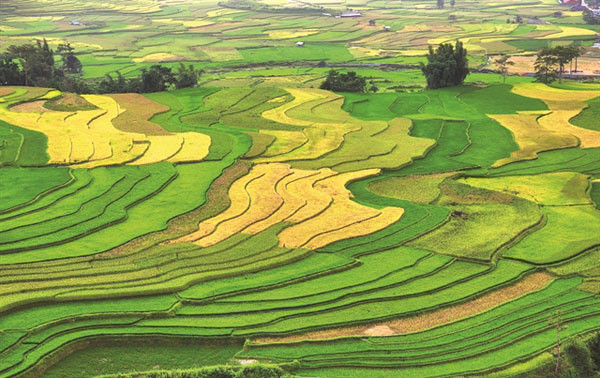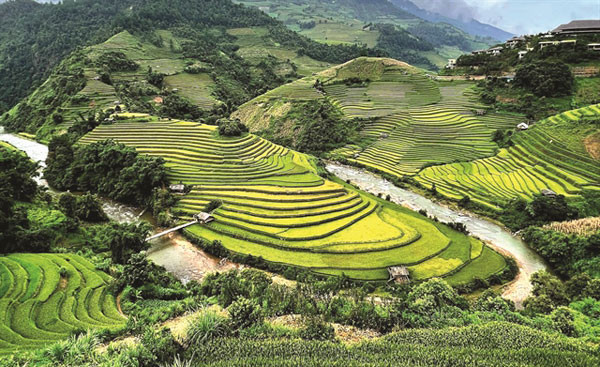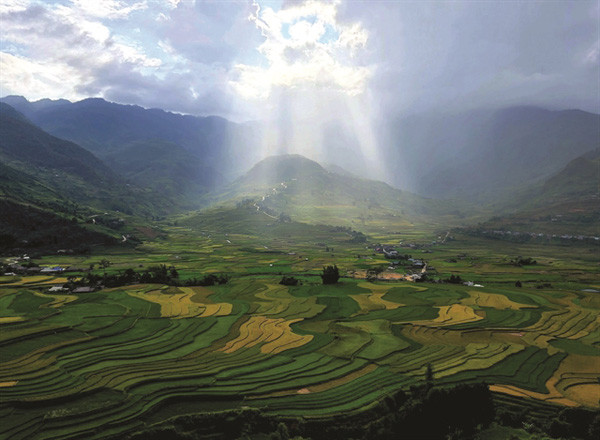
Along with the Philippines' Luzon Island and China's Yuanyang valley, Mu Cang Chai is a Vietnam's Northwest mountain masterpiece known for its breathtaking terraced fields.
Middle of September marks the beginning of the peak golden rice harvest in this impoverished region of Yen Bai Province. These terraced fields draw in enthusiastic sightseers thanks to their picturesque views and vibrant colours.
Backpackers often refer to Mu Cang Chai as "the heart of the Northwest" because of its central location on the map of Vietnam's Northwestern area.

The journey to this place, however, is seldom a smooth one. Khau Pha Pass is at the altitude of 1,000 metres. It is a 30-kilometre-long, winding, and steep route that most travellers must take to reach the land of the golden season.
There are currently two main routes leading to Mu Cang Chai. If you travel by coach or car, take the Noi Bai – Lao Cai highway and exit at Vinh Phuc, Phu Tho, and Nghia Lo Town. After that, continue along Highway 32 to Mu Cang Chai.
Motorcycling is the ideal mode of travel for adventurers who seek a challenge and who want to see the world.
For biker, the road leading to Mu Cang Chai will follow Highway 32 and cross the Trung Ha – Thanh Thuy – Thanh Son – Xuan So Bridge before reaching Nghia Lo Town.
Highway 32 continues onward from here, taking you to Mu Cang Chai.

As the temperature hovers around 23 degrees Celsius at this time of year, tourists to Mu Cang Chai can enjoy a pleasant glimpse of autumn in the Northwest mountains.
Buckwheat blooms also start to open about now. Millions of flowers blooming across the mountain slopes and woodland floors is a testament to the grace of the nature.
The months of April and May mark the beginning of the "water pouring" season in Mu Cang Chai, which many people believe to be another ideal time of year to take a trip to this place.
At that time of year, when the fields have recently been ploughed and flooded with water, visitors can take in the gleaming surface of the fields in the sunlight, the silvery white colour of the newly irrigated field surface, and the green colour of the early transplanted fields.
All of them paint a picture of harmony with nature.
Mu Cang Chai District has approximately 61,000 residents, 91 per cent of whom are Mong ethnics, with the remainder being Thai, Kinh, and other ethnic groups.
In addition to discovering terraced fields, tourists to Mu Cang Chai may also have the opportunity to learn about the ways of life of the locals as well as the specific cultural practices of the Mong and Kho Mu ethnic groups that live in the area.
Source: Vietnam News